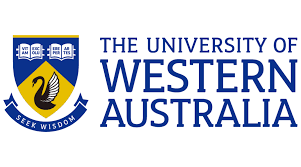University of Western Australia: Radioactive seeds to treat breast cancers
The results of a trial that uses tiny radioactive seeds to localise breast cancer lesions have been released with the technique already becoming standard practice in several Australian hospitals.
The ROLLIS Trial, led by researchers at The University of Western Australia, Royal Perth and Sir Charles Gairdner Hospitals, compared the rates of successful excisions in women with breast cancer who had undergone the new method as opposed to the standard technique of inserting a hookwire.
The study, published in the British Journal of Surgery, foundfewer women who had their breast cancers localised with the radioactive seed needed a second operation to completely remove their cancer.
The new technique uses a tiny seed containing a trace of low dose radioactive material that is inserted into the lesion prior to surgery. Surgeons are able to depend on the seed to localise the lesions during surgery.
Unlike a hookwire, which must be inserted on the day of surgery, the iodine seeds can be inserted up to 8 days before the operation.
The trial was carried out on 659 women with non-detectable breast cancer, making it the largest in the world to have compared these techniques.
The women were randomly assigned to have their cancers localised using either the hookwire insertion or the ROLLIS method.
The rate of incomplete cancer removal for women who underwent ROLLIS was 5.5 per cent compared with 7.8 per cent for the group who underwent hookwire insertion. Significantly fewer women in the ROLLIS group needed further surgery.
Both radiologists and surgeons reported that ROLLIS was easier to perform and patients reported experiencing significantly lower levels of anxiety and pain.
Breast radiologist Associate Professor Donna Taylor from UWA’s Medical School said there were significant benefits in using the new technique.
“The ROLLIS method uncouples the radiological and surgical procedures required for breast cancer surgery, helping to shorten delays in theatre lists,” Associate Professor Taylor said.
“This improves the availability of theatre time for complex breast surgery cases, such as breast reconstructions, to be performed at the more major hospitals.”
Associate Professor Taylor said the results of the research had already been translated into practice at multiple sites across Australia and Waikato Hospital in New Zealand.
“Iodine seeds have replaced hookwires as the standard technique for pre-operative breast lesion localisation at all the trial sites,” Associate Professor Taylor said.
“At Royal Perth Hospital and Fiona Stanley Hospital the use of ROLLIS has meant that women can have their localisation procedure performed at one hospital and then return for their surgery at another.”
UWA Professor of Oncology Christobel Saunders said it was fantastic to see the technique being adopted throughout Australia from a trial led by UWA.
“We had noted some years ago that we needed a better technique to localise small breast cancers to help surgeons deliver the most accurate surgery, Professor Saunders said
“It has been great to be able to undertake the definitive study to show that the ROLLIS technique really is superior in both accuracy, as well as being of benefit to the patient, the clinical team and the hospital.”
This ROLLIS trial was supported by The State Health Research Advisory Council, Cancer Council of WA, The SJOG Foundation, The RPH Research Foundation and The Ladybird Foundation.

